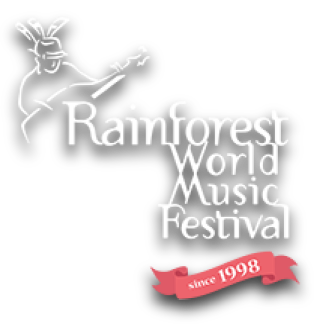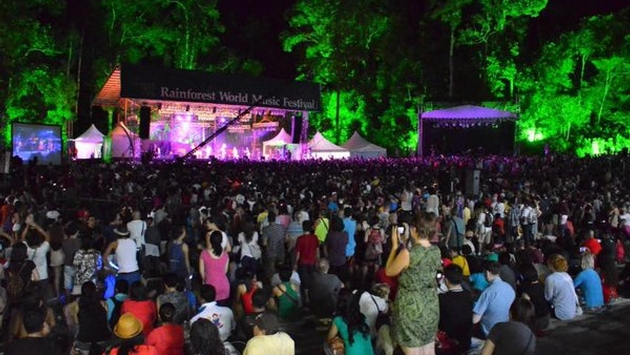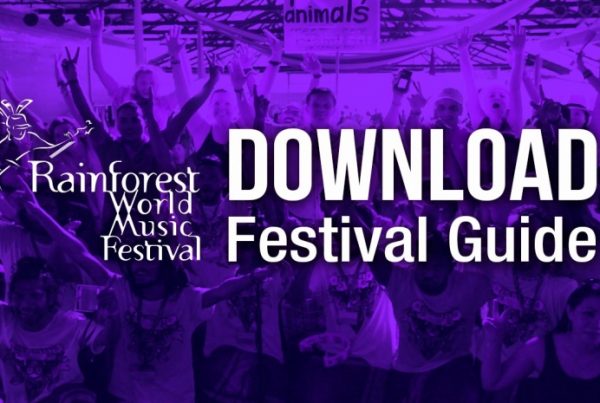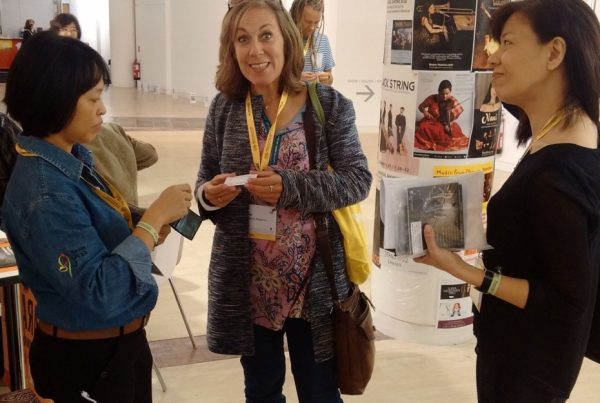His eyes are closed, and he’s biting down dramatically on his lower lip. His shoulders are tense and up around his ears, his head snapping down towards the floor. Sweat drips down the side of his head and off the bridge of his glasses. The crowd is clapping along steadily, urging him to keep up the pace. His fingers are flying as he leans back and fans out his arms. I stand up and dance.
 Never in my life have I seen a man absolutely shredding the accordion.
Never in my life have I seen a man absolutely shredding the accordion.
His name is Jose Agustin, a member of the Basque-based folk band Korrontzi. Earlier, when he was explaining how the accordion fits in to Basque tradition, he explained that it was once banned by the Catholic Church because its sound “led to flirting” at dance halls. Beside him, waiting for their turn to share and shred, sit accordion players from Poland and Australia.
Here in the shadow of Mount Santubong in the Malaysian state of Sarawak, where the trees climbing the hillside look like bunches of broccoli, the 2015 Rainforest World Music Festival is in full swing.
At the Sarawak Cultural Village, about 45 minutes from Kuching, the rainforest dives down to meet the coast and the South China Sea, serving as a backdrop for the yearly three-night, three-stage festival. Each night, artists from all over the world — think calypso from Trinidad, bluegrass from Canada, Gaelic from Scotland, salsa from Cuba, drumlines from the Basque country, tribal music from Malaysia, and Kora players from Gambia and the Reunion Islands — put their music and culture on display to a crowd as diverse as the lineup.
But it is during the day that the best part of the festival takes place. Through a series of what the organizers call “workshops,” musicians present their individual and collective styles in themed performances. For example, the accordion players from the different bands gathered to show how the instrument is played in their culture, and all the string instruments were brought out to demonstrate the different sounds and how they fit into a particular part of the world.
It is in these intimate sessions that you have the chance to meet the performers, see their personality, then say, “okay, I want to see this guy or that girl play tonight.” Such was the case for me with accordion-prodigy Jose Agustin of Korrontzi, or Drew Gonsalves of Kobo Town (Trinidad and Tobago), who stirred up the crowd when he demonstrated calypso chords and rhythms at one such workshop.
After the first night at the festival, many of the backpackers went and danced to electronic music at the nearby beach bar. On the beach itself, a few of the musicians from Tunisia set up a drum circle. I sat poolside at the adjacent hotel, hanging with members of Scotland’s Shooglenifty as they kicked back with their acoustic instruments.
There is something extremely special about traveling that far and being that remote and still being treated to a variety of cultures, walking away with much more than a rolodex of new music. Here in North America, we worship and treat musicians as untouchable celebrities. But at the RWMF on Borneo, it’s actually about the music.
Occurring each year in the summer during the low season (usually July or August), the festival is a great event around which to center a trip to Kuching, known for its tremendous access to over a half dozen national parks, like Bako, Kubah, and the Kuching Wetlands. You can see orangutans any time of year, but only during the Rainforest World Music Festival does the world come to you in Sarawak.
Source: http://www.travelpulse.com/







